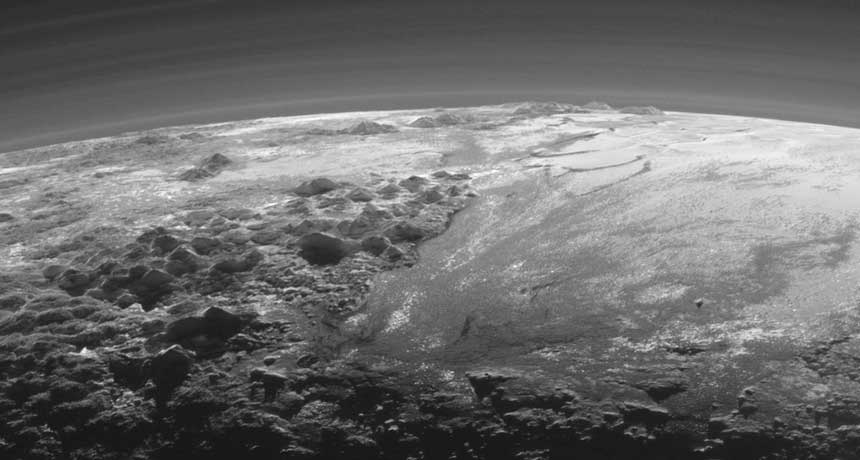Ice gave Pluto a heavy heart
Buildup of frozen deposits could have carved dwarf planet’s iconic landscape

FEELING DOWN A basin on Pluto named Sputnik Planitia (at right in this image from New Horizons) might be a depression formed by the weight of a massive ice cap, a new study suggests.
NASA, JHUAPL, SWRI







